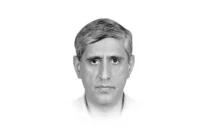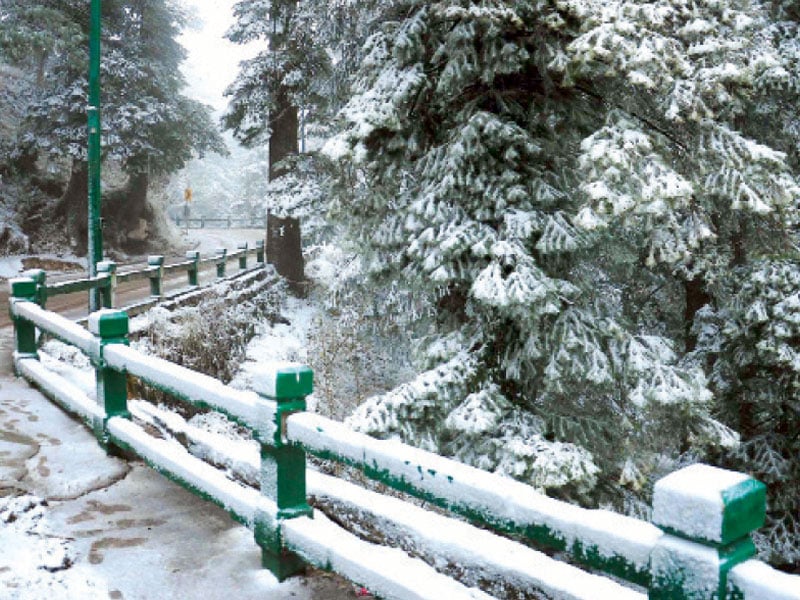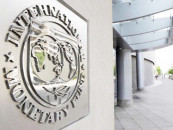The drowning Karachi coast
.

Karachi is the largest city of Pakistan, an economic powerhouse and one of the busiest seaports in South Asia. It plays a crucial role in driving the country's trade and commerce, but an environmental crisis lies beneath the surface of this vital hub.
The waters surrounding the port, particularly in the harbour area, are heavily polluted with industrial waste, sewage and oil spills, posing a threat to the marine ecosystem and the livelihoods of numerous people who depend on the sea.
To address environmental challenges, Pakistan has implemented various rules and regulations. In line with these efforts, the Karachi Port Trust (KPT) established the Marine Pollution Control Department in 1996. However, even after such measures, there has been little to no impact on the pollution at Karachi port.
This insight examines the legal and environmental challenges of coastal pollution at Karachi Port and assesses the effectiveness of sewage treatment initiatives, such as the S-III plan.
The Harbour, which spans over 62 sq km, receives a diverse range of pollutants, including at least 411 million gallons per day (MGD) of liquid effluents, 122 MGD of municipal waste and 350 MGD of industrial waste. Moreover, operational waste from hundreds of fishing crafts at Karachi Fisheries and Karachi Port also contributes significantly to the pollutants.
This pollution harms marine life, damages fish habitats and mangroves, corrodes ships and negatively impacts the health of coastal residents and tourists. This escalating pollution crisis has become a national security threat - endangering marine ecosystems, the blue economy and trade operations.
This longstanding issue has continued despite various efforts. The Pakistan Environmental Protection Ordinance 1983, promulgated after Pakistan acceded to the United Nations Convention on the Law of the Sea, focused on penalising industries rather than helping them transition to eco-friendly processes.
Later, in 1997, the Pakistan Environmental Protection Act came into force, under which owners of industrial units were responsible for treating industrial waste and disposing of wastewater properly. In addition to these national laws, Pakistan is a signatory to several international conventions.
These include the International Convention for the Prevention of Pollution from Ships and the London Convention and Protocol (1972), which regulate marine pollution by restricting waste disposal at sea; and the Basel Convention (1989), which aims to prevent harm from hazardous waste and its transboundary movement.
After the 18th constitutional amendment devolved environmental responsibilities to the provinces, inconsistencies between federal policies and provincial enforcement created gaps that weakened the effectiveness of international commitments.
To address the deteriorating pollution in Karachi's coastal waters, exacerbated by the poor enforcement of laws and industrial non-compliance, the government has launched several infrastructure projects. These include several sewerage plans, the first being S-I and the second being S-II, both of which focused on modernising Karachi Port to make it competitive in international trade.
Alongside these, the Greater Karachi Sewerage Plan (S-III) was introduced. Conceived in 2007 and launched in 2013, it is a major project designed to treat up to 460 MGD, which currently flows untreated into the Arabian Sea, endangering the environment and public health, and to rehabilitate and expand Karachi's sewage treatment capacity by ensuring that wastewater is managed correctly.
S-III includes the development of several key sewage treatment plants (STPs) strategically located across the city. TP-I is situated in Haroon Abad, while TP-II was proposed in the Korangi Industrial Area. TP-III is in Mauri Pur and TP-IV was planned for construction near Mahmood Abad.
While TP-I and TP-III remain central to the project's implementation, TP-II and TP-IV were eventually discontinued due to land disputes and logistic challenges, as the proposed sites faced issues such as limited space and difficulties in acquiring the necessary land for construction.
TP-I is designed to treat 100 MGD of sewage and is being implemented in phases, starting with an initial capacity of 35 MGD, increasing to 65 MGD, and ultimately reaching its full capacity. As of September 2024, civil works on TP-I are 58% complete, mechanical works are at 29%, while electrical installations are yet to begin. The estimated completion date for TP-I is June 2026.
TP-III, located in Mauri Pur, was partially operationalised in 2018 with a treatment capacity of 54 MGD. However, over time, this capacity has decreased to 35 MGD due to inadequate maintenance and infrastructure deterioration.
Plans are now in action to upgrade TP-III to treat 180 MGD, with an intended completion date of Dec 2026. Furthermore, trunk sewer systems are being developed to channel sewage from major basins, such as Lyari and Malir, to these treatment facilities. Particularly, a 33km sewer pipeline from Surjani Town to Mauri Pur has been partly completed to serve the Lyari basin.
Despite progress, S-III faced setbacks, with TP-I and TP-III delayed due to a federal-provincial dispute over cost increases, as well as a four-year construction halt from 2019 to 2023 caused by the Covid-19 pandemic. The project's cost has escalated to over Rs36 billion, from an initial estimate of Rs7.9 billion, due to delays, scope expansion and funding disputes.
The federal government initially provided funds but later withdrew its support, shifting the entire financial burden to the Sindh government. Moreover, delays in machinery acquisition, a lack of trained personnel and ineffective coordination among authorities have considerably slowed implementation efforts.
To help tackle the pollution crisis in Karachi, the World Bank has committed $240 million under the Second Karachi Water and Sewerage Services Improvement Project (KWSSIP-II) to support broader improvements in Karachi's water and sanitation infrastructure. However, this funding has been dispersed across multiple projects, including upgrading water supply systems, improving sewage treatment plants, expanding drainage networks and enhancing the institutional capacity of water utilities. So, its impact on the pollution issue has been diluted.
Rising costs and limited funding have delayed projects, such as S-III. The failure to fully implement these plans has already begun to be reflected in worsening coastal pollution and degradation of aquatic ecosystems.
In conclusion, the perpetual pollution crisis at Karachi Port serves as a stark reminder of Pakistan's long-standing environmental governance negligence and inefficiencies. Despite multiple legal frameworks, institutional efforts and infrastructure projects, the envisioned goals of sewage treatment and marine conservation remain largely unattainable.
S-III is now the sole responsibility of the Sindh government after the Federal government withdrew its support, even as project costs soared from Rs7.9 billion to over Rs36 billion, with some estimates reaching Rs54 billion. By urgent, unified action and time-bound goals, Pakistan can still reverse the environmental degradation of its coastal waters and protect the future of its blue economy.





1729685382-0/Untitled-design-(57)1729685382-0-208x130.webp)











COMMENTS
Comments are moderated and generally will be posted if they are on-topic and not abusive.
For more information, please see our Comments FAQ